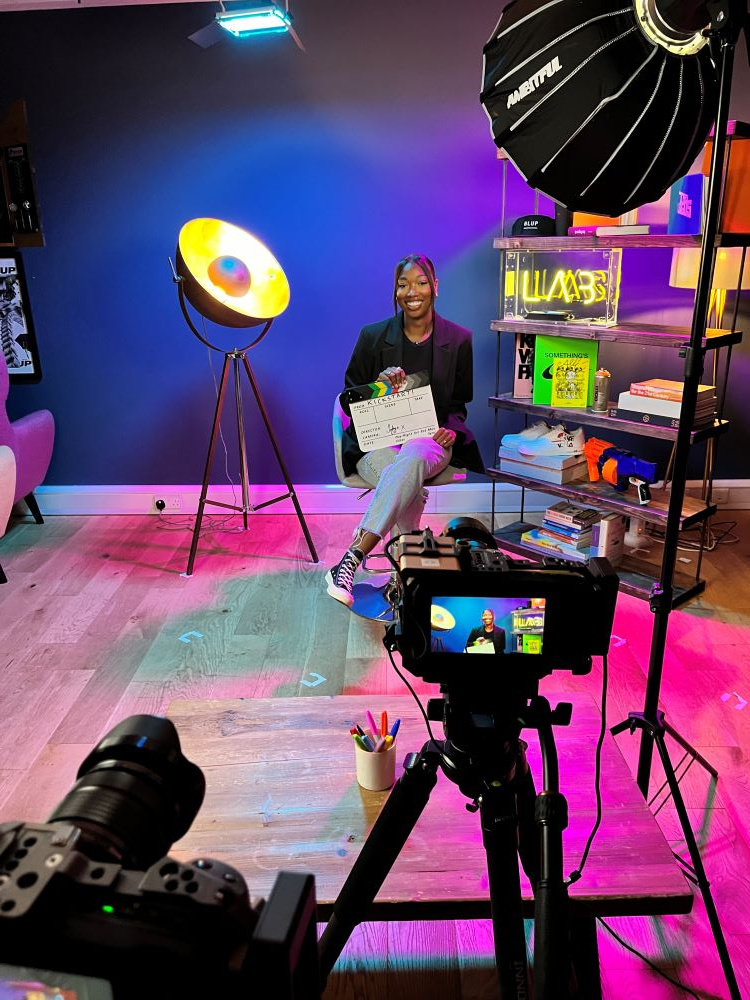Can online courses provide more diverse channels into design?
Ravensbourne University’s head of work-based learning and curriculum partnerships Derek Yates explains how a new set of free online courses was developed.
Ravensbourne University London has launched a free education platform for young creatives from underrepresented backgrounds, in a move to “fix the pipeline into the design industry”.
The new platform, Kickstart!, seeks to plug skills gaps in the creative industries and help young people to launch their careers outside of mainstream education channels. Ravensbourne developed the platform in collaboration with creatives from Studio Blup, The Wilderness Agency, Mother London, The Guardian Digital and Brandmovers. It comprises three courses for projects to kickstart: a brand, a digital campaign and a social media conversation.
According to the university’s head of work-based learning and curriculum partnerships Derek Yates, Ravensbourne has always had a “diverse cohort”. In 1962, Bromley, Beckenham and Sidcup schools of art merged to form Ravensbourne College of Design and Communication, which became Ravensbourne University in February 2010.

Yates has worked with Studio Blup creative director Dines for the last three years and during lockdown saw an opportunity to create online courses with open online education platform Futurelearn. After receiving funding from the British Interactive Media Association (BIMA), Yates and Dines developed a Digital Storytelling course on FutureLearn, which has since had 4,500 people enrol. They then developed another series of FutureLearn courses funded by the CreativeUK.
One of the issues Yates and Dines had been talking about for several years was the lack of representation within the industry, which Kickstart! seeks to provide a solution for. As well as facilitating “more diverse representation to produce better work”, Yates says the online courses seek to help creatives who had been “failed by the school system”.

He describes a negative bias against working in the creative industries that exists right from secondary school level, saying that the “fast pace of the industry” is not communicated by careers advisors. While ensuring creative subjects are more valued at school level is one issue to tackle, Yates believes that online courses outside of mainstream education can help people overcome entry barriers and increase diversity across the industry.
For Kickstart!, Yates and Dines looked into the UK Research and Innovation’s (UKRI) knowledge exchange framework, in which the government puts up an amount of money to fund partnerships with industries that benefit the community or plug skills gaps.
After obtaining the funding, Yates and Dines developed Kickstart! using their previous expertise. Yates says: “In the making of the FutureLearn courses, we worked out some things about how online learning works”.
Combining industry and education
Since Ravensbourne is a relatively new university established out of a design school, it doesn’t work to “traditional research metrics”, says Yates. Instead, it is well-connected with the industry and taps into its network of alumni other creative professionals that the university has kept a relationship with over the years.
Competitor research revealed that platforms like Domestika are largely “industry practitioners talking to camera”, while FutureLearn is solely “academics talking to camera”, according to Yates. The combination of Dines, “the up-to-the-minute industry expert”; and himself, “the old educator”, works well, says Yates.
He also stresses the importance of having people from underrepresented communities involved in the course, such as Dines and Zahra Hasan, formerly of Wilderness, now The Guardian.

“My experience of online courses is that everyone comes into it with different needs”, says Yates. The course is designed so that students can learn and study when they want. Each course is broken down into 12 modules, and each module into three sections: a video around ten minutes long, relevant links tailored to each section, and a short multiple-choice quiz.
Although each module is advertised to take around 30-45 minutes, Yates says that “for a student who wants to put in maximum effort” it could take from 16 to 25 hours to complete the whole course if learners want to engage with “extra materials” and use the discussion forum to “connect with like-minded people who are also just getting started in the industry”, says Yates. For those with less time, a course could be done in just under eight hours.
There was also a focus on presenting to the camera in a way that helped provide easily digestible bite-sized content. Yates says they even used YouTubers Chunkz and Filly’s cinematographer, in a bid to make the “Watch and Learn” section “similar to the content that young people are already accessing”.
Who is it for?
Though the primary audience is young people, the course is designed to work for any adult age group or ability and there is no specialist design knowledge required. Learners don’t necessarily have to be designers, says Yates, explaining that “you could be a 40-year-old woman running a hairdressing business and you want to understand how to brand it”.
Yates also clarified that, while Kickstart!’s free-to-access nature targets underrepresented groups by its nature, there are no criteria to meet, and the course can be accessed by registering with Ravensbourne’s outreach scheme.
Learners will be able to include Kickstart! on their CV as a short course accredited by Ravensbourne University, but there are not yet any official university credits associated with it, nor any formal assessment.
Yates confirmed that in the future there will be more formal assessment as part of the course, likely in the “Test and Apply” sections or “a mini portfolio of projects to assess”, he says.
In the next few months, Yates and the other course partners also hope to launch a Kickstart! TikTok, for the sharing of 30-second “meta-lessons”.






https://www.ravensbourne.ac.uk/people-and-stories/news/kickstart
Sign up for free!